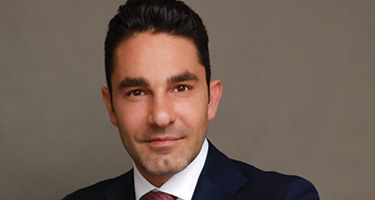INCIDENTS OF sexual misconduct among physicians during routine physical exams are not uncommon. Until recently, patients rarely reported sexual assaults by their doctors for many reasons: the fear they wouldn’t be believed, embarrassment and mortification, and having been told by the physician that assaultive behaviors were part of a routine exam.
Many doctors are now being investigated and charged criminally throughout the U.S. for sexual assaults on patients, some of which occurred many years ago but that victims have only recently reported. Often, when one patient reports a crime, others will soon follow.
Not long ago, a Michigan urologist serving as an amateur hockey team physician was charged with sexually assaulting a player. In Indiana, an OB/GYN is under investigation for taking photographs of his patients’ private areas without their consent. After these assaults were publicized, dozens of other patients stepped forward to file complaints with the police.
In addition, many high-profile sexual assaults have been reported against major universities by victims of team doctors and college employees. The cases that drew the most attention include gymnasts assaulted by Dr. Larry Nassar at Michigan State University; Dr. Robert Anderson at the University of Michigan; the late Dr. Richard Strauss at Ohio State; and Dr. George Tyndall at the University of Southern California.
In addition to criminal charges and medical licensing issues, physicians throughout the country who have assaulted patients have faced lawsuits. Many large cases—especially those brought against universities—have been settled for significant money, with the victims receiving substantial compensation. Other less-notable cases have prompted sizable settlements as well.
Physicians often try to blur the line between acceptable medical exams and inappropriate sexual touching. They perform unnecessary or otherwise essentially meaningless maneuvers under the false pretense that they’re part of the standard exam. Even suspicious patients tend to trust their doctor, assuming such acts are medical and not predatory in nature.
In a civil suit, patients must prove that sexual abuse occurred. There is usually no physical evidence of assault, and there are seldom eyewitnesses. As such, the cases with the best outcomes are those involving multiple patients with similar complaints.
To prevail, patients must also prove that the physician acted outside the bounds of acceptable medical practice. Patients’ description of an over-invasive exam provides the factual basis for the suit; expert testimony from other doctors regarding the standards of care is required in most states.
In addition to suing the doctor, victims can sue the hospital, university, health system or medical practice that employed the putative abuser. These lawsuits allege that the employer knew, or should have known, about the sexual propensities of the doctor but failed to act to prevent harm. In many cases, administrators ignored complaints and warning signs and permitted the doctor to keep seeing patients.
A primary issue in such sexual assault suits is the statute of limitations. Attacks might have occurred many years prior, and patients came forward only much later—often decades later. Some states, including Ohio, Michigan and New York, have extended the statute of limitations for sexual assault cases to enable these cases to proceed, thereby giving victims time they would otherwise not have had to seek redress.
A Utah court recently held that dozens of patient sexual assault claims against their OB/GYN were barred by the state’s statute of limitations. The trial judge determined that such cases were founded on principles of medical malpractice only, dismissing the suits based on the statute of limitations that applied to medical negligence lawsuits.
Damages awarded in cases like these are often significant. Noneconomic damage includes severe mental anguish, fright, shock and emotional distress. The abuse can affect a victim’s personal relationships and cause nightmares and post-traumatic stress disorder. A mental health professional such as a psychologist or psychiatrist can testify as to the extent and likely permanence of this damage.
Many plaintiffs also suffer financial losses and other economic harm: significant, ongoing expenses related to therapy and medication; a diminution of future earnings; and loss of past wages.
The criminal justice system has held many sexually assaultive physicians accountable for their actions, and some, like Larry Nassar, are serving lengthy prison sentences. However, the criminal process doesn’t compensate victims for their losses. Civil suits must do this.
There are many legitimate reasons for a patient not to report a doctor’s deviant sexual behavior. However, it’s wise for patients who suspect they were a victim of an assault to consult an experienced attorney as soon as possible. This is the best way to prevent similar attacks on other patients, as well as to ensure that a case is filed in a timely manner.
Lawrence J. Buckfire is a trial attorney in Southfield, Michigan. His law firm specializes in personal injury and medical negligence cases.



































